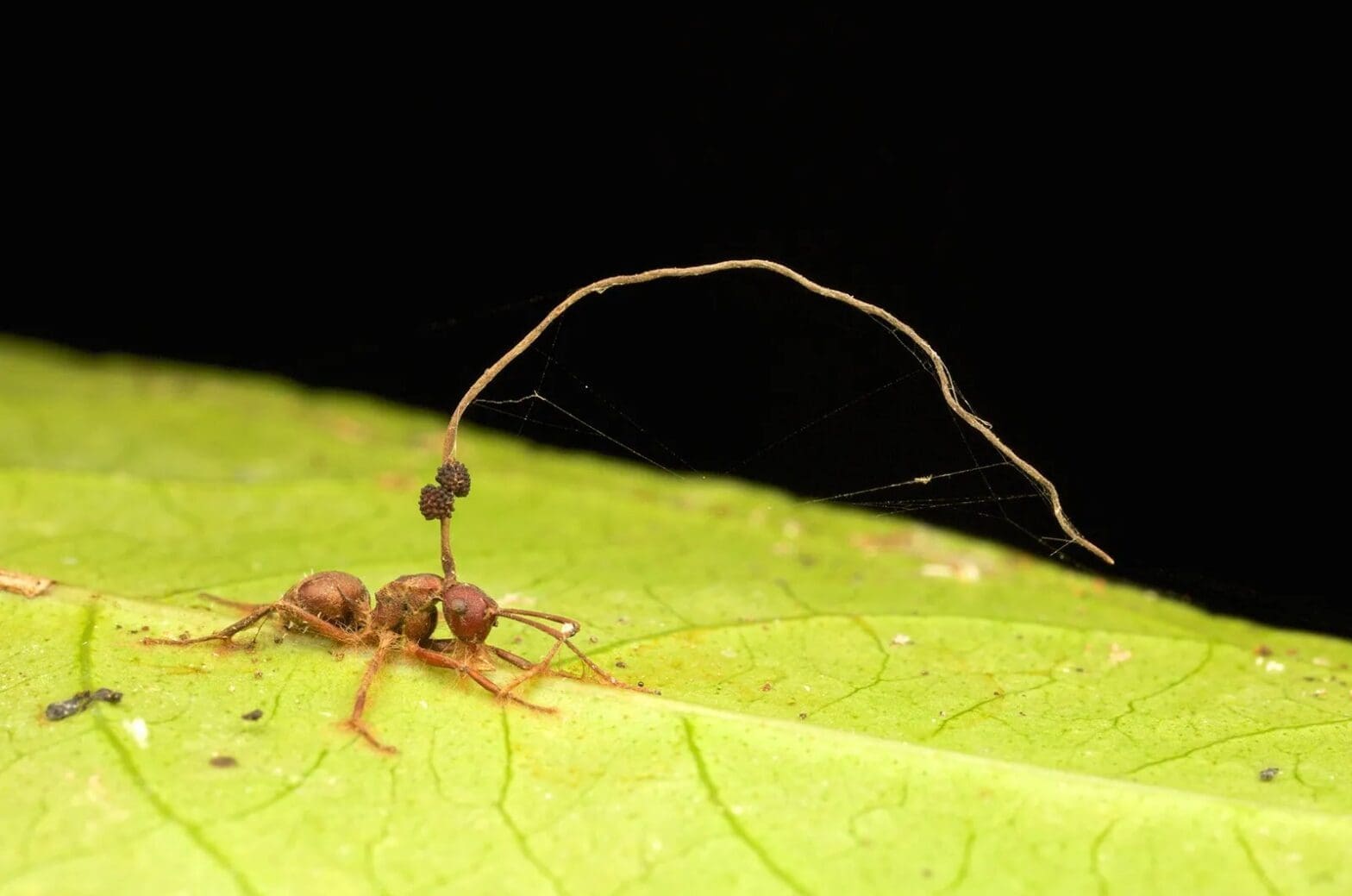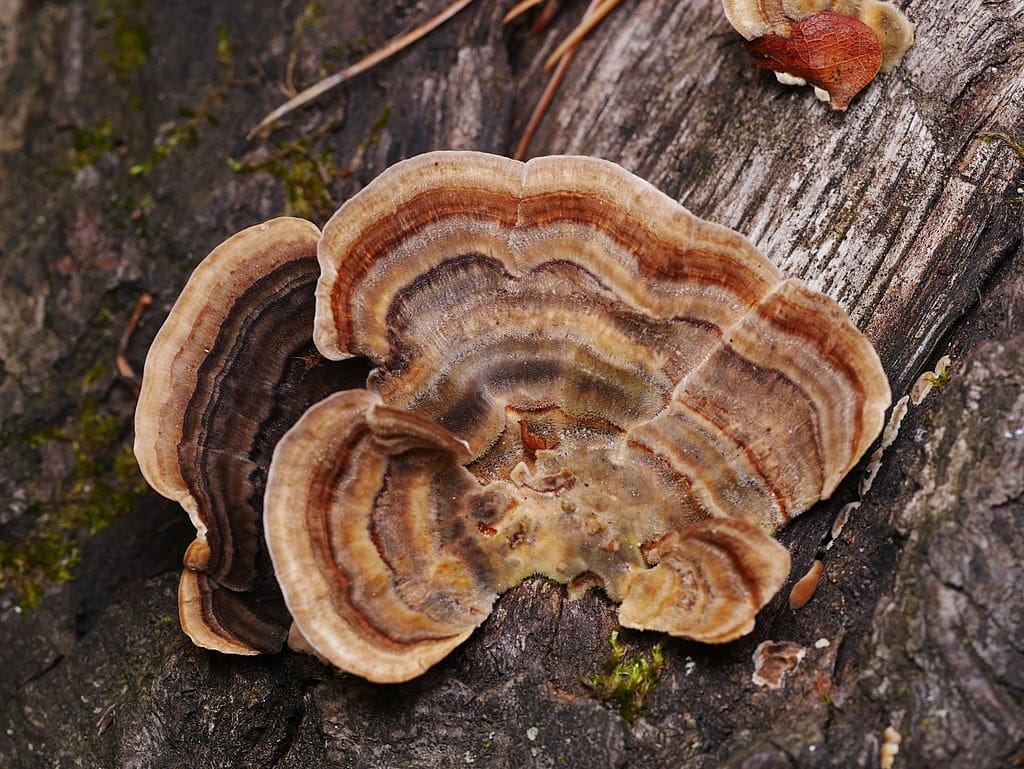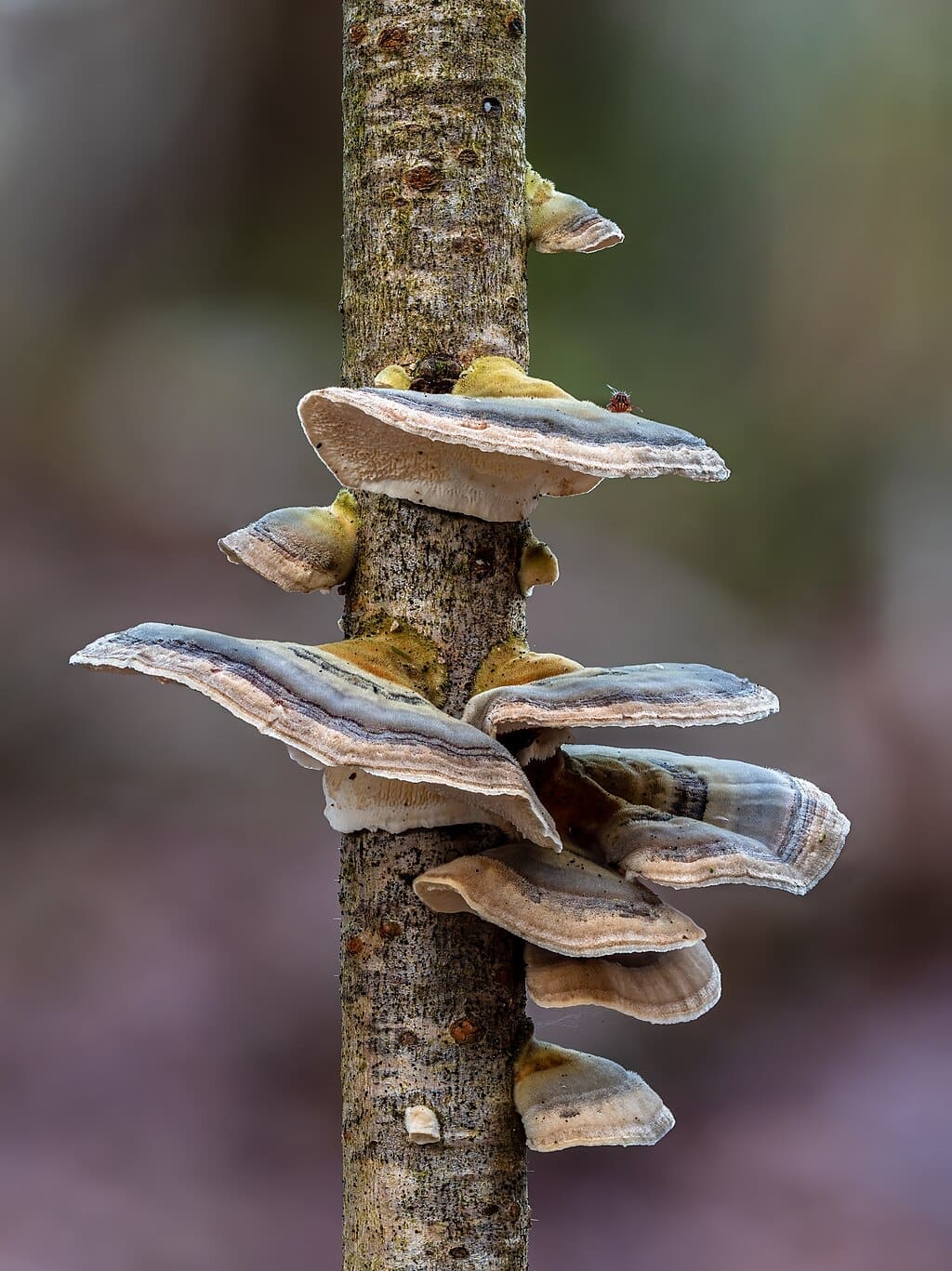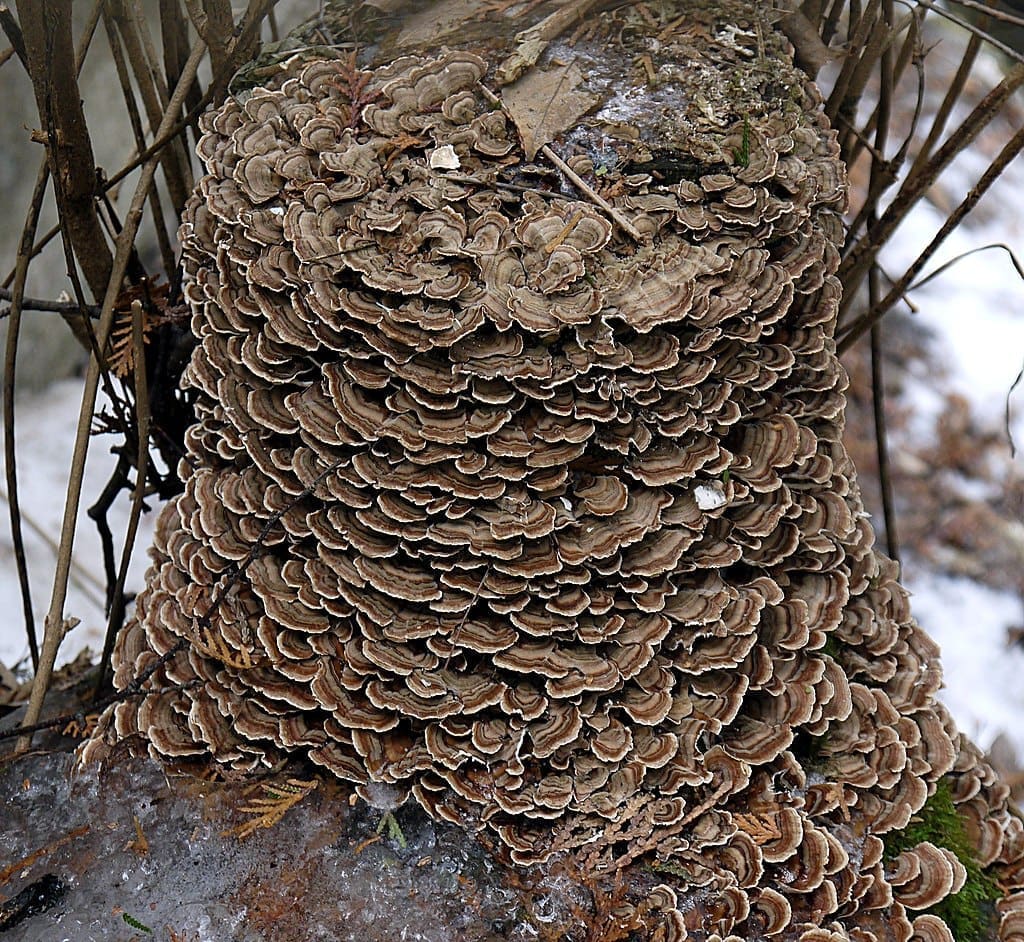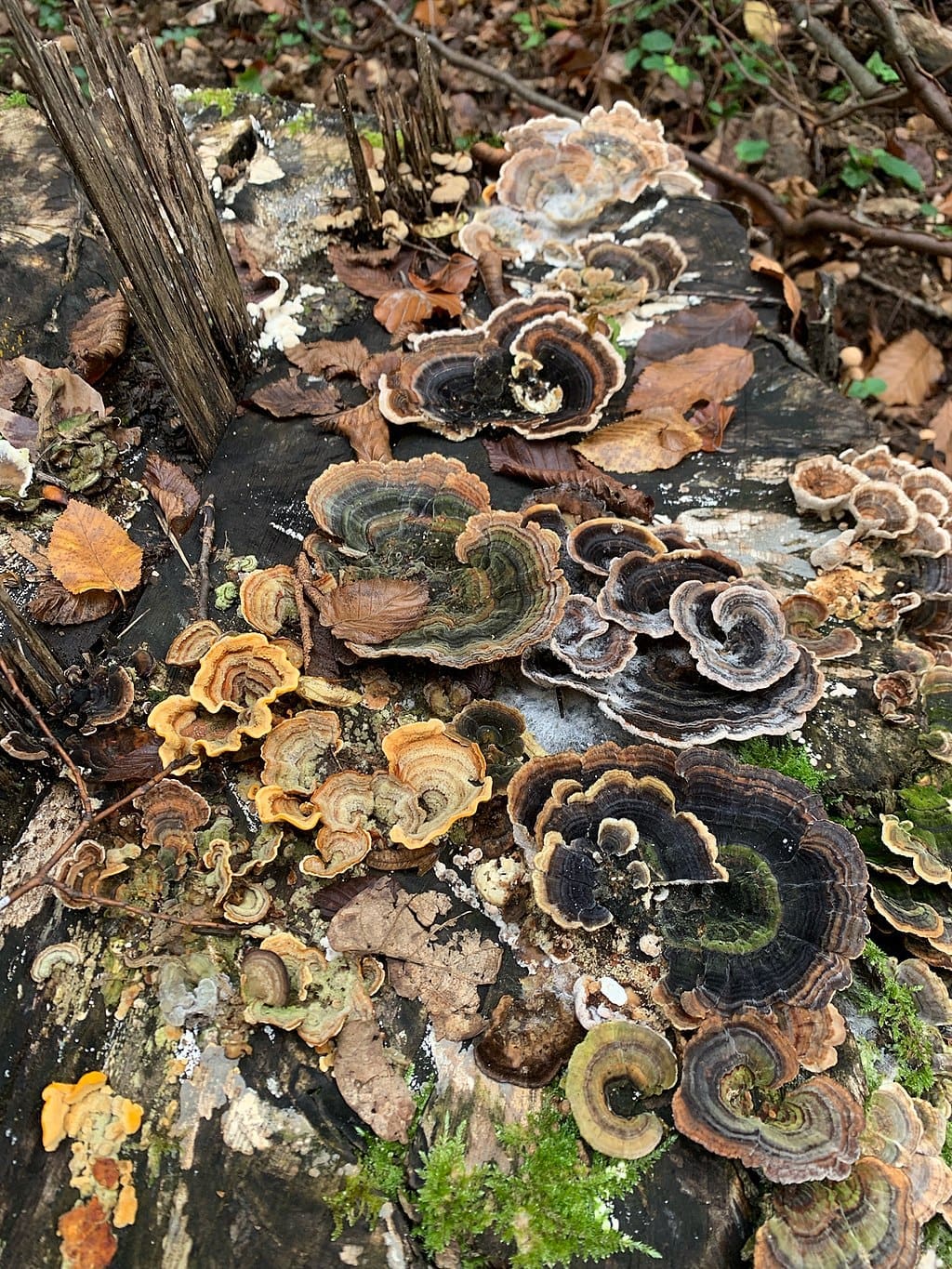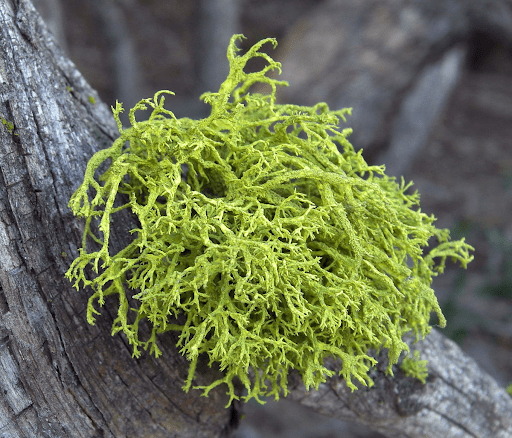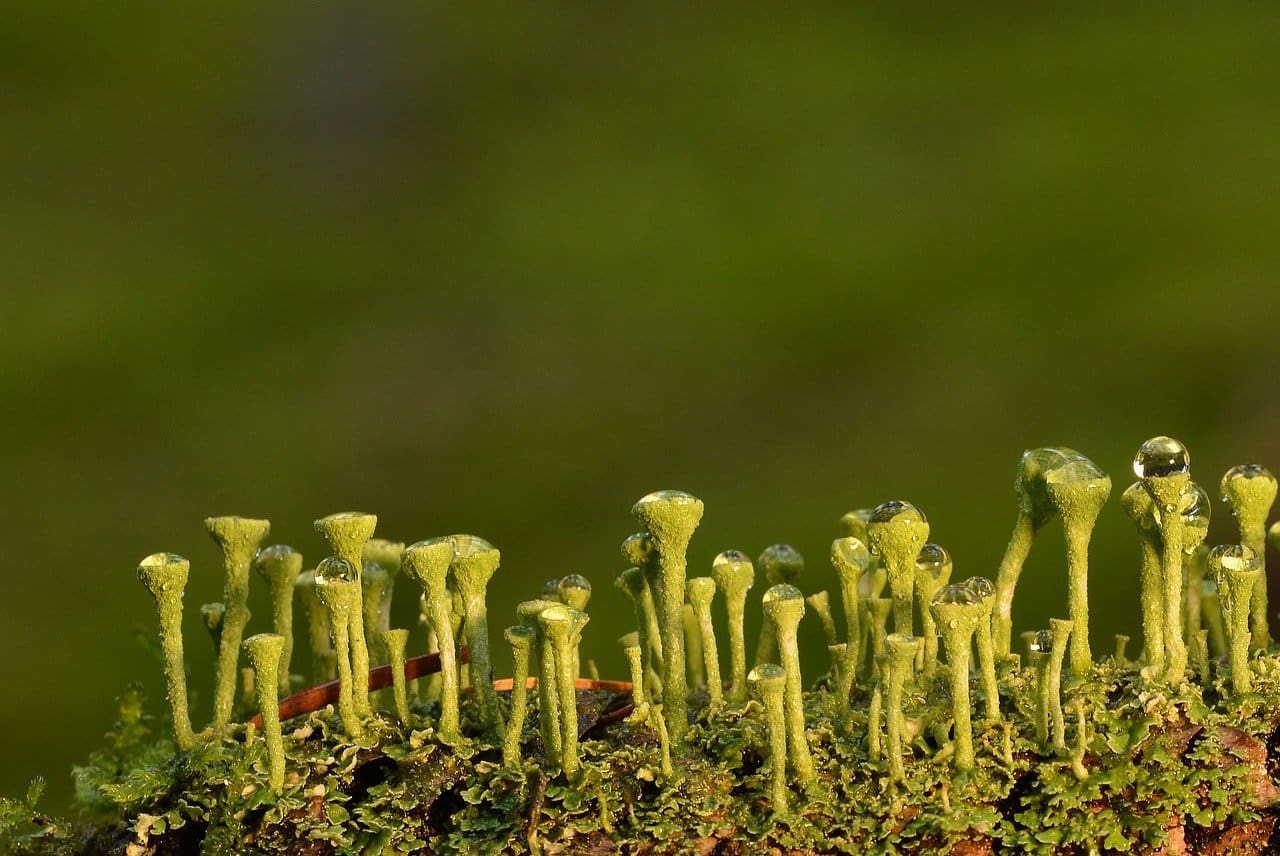What creature preys on ants and other insects, invading their bodies, seizing control of their minds, and killing them off to reproduce, all the while inspiring zombie stories that terrify us humans?
Welcome to Zombie Ant Fungus, or Ophiocordyceps Unilateralis!

One of the most amazing things about being in touch with the natural world is the uncontained sense of wonder that infuses us as we learn about the incredible range of biodiversity out there to be discovered. My recent pieces on Mantis Shrimp and Ghost Pipes are good examples of diversity and symbiosis, while this curious creature shows off the parasitic side of interspecies relationships. Ophiocordyceps unilateralis, commonly known as Zombie Ant Fungus, is an insect-pathogenic fungus, discovered by the British naturalist Alfred Russel Wallace in 1859, and currently found mostly in tropical forest ecosystems.
The Zombie Ant Fungus is like no other creature I know; it’s like a runaway horror movie that even ants shall encounter with fear, and try their best to avoid. Its story is intriguing and represents scary stuff. Indeed, this strange creature is featured in two books by M. R. Carey called The Girl with All the Gifts and The Boy on the Bridge, as well as in a video game and show, The Last of Us, which recently wrapped up its first season to critical acclaim. In that feature, humans struggle to survive after an infectious fungus turns us into zombies largely in the style of Ophiocordyceps.
Who knew that such an innocent seeming creature could become so devious and troublesome? Is there anywhere for us to hide? We need not worry. This pathogen can’t transfer to us, or at least to do so would take many millions of years. So I guess we can relax…
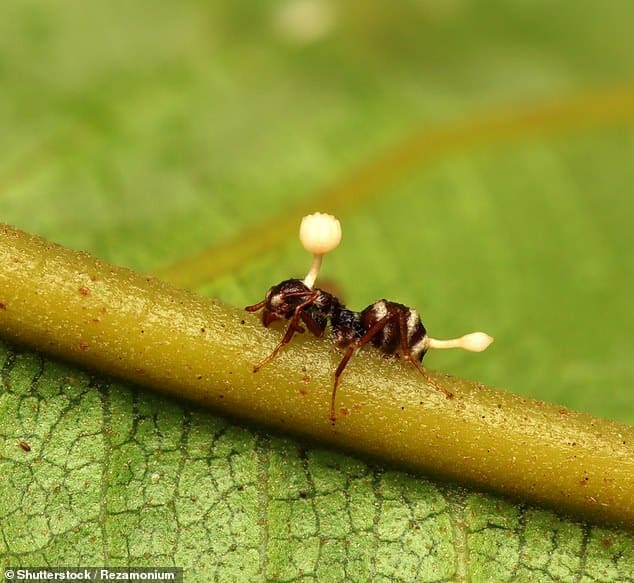
There are some major differences between how the fungus is portrayed in shows like The Last of Us and in real life. Cordyceps does not typically infect other hosts through the mouth, and the infected aren’t connected to each other through a network.
Most importantly, the fungus cannot infect humans, because our body temperatures are too high for most of them. Phew! In fact, people have been eating Cordyceps for centuries now without turning into zombies. It’s a traditional Chinese medicine, used to treat kidney disease and other ailments. So let’s set aside these worries, and get back to the reality of these intriguing creatures.
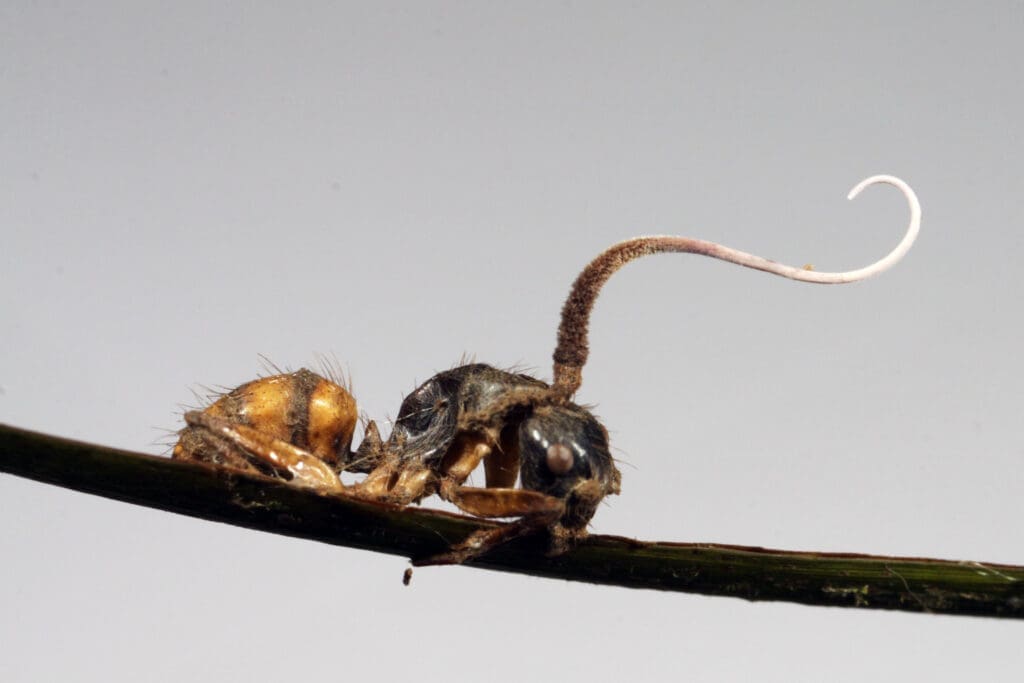
A Sinister Cycle
These fungi live in jungle habitats, such as in tropical forests, where a species of carpenter ant, Camponotus Leonardi, lives in the high canopy and has an extensive network of aerial trails. But sometimes the canopy gaps are too far apart and difficult to cross, so the ants’ trails descend to the forest floor where they are exposed to Zombie Ant Fungus (Ophiocordyceps unilateralis) spores.
The spores attach to these ants’ exoskeletons and break through, invading its host’s body as a parasite. Like other fungi pathogenic to insects in the genus Ophiocordyceps, this fungus targets a specific host species, in this case the carpenter ant. However, this fungus may also parasitize other closely related species of ants or other insects, though these come with lesser degrees of host manipulation and reproductive success. Some of this fungus’ subspecies, such as Ophiocordyceps sinensis, colonizes ghost moth caterpillars instead of carpenter ants and erupts from their head like a unicorn horn.
Check out the sprouting phenomenon taking place in an infected bullet ant:
As in zombie lore, there’s an incubation period where infected ants appear quite perfectly normal and go about their business undetected by the rest of the colony. First, the spore infects the ant and fungal cells start growing inside its body with no notable effects from the outside. But eventually, the infected ant stops participating in the foraging efforts of the colony and stops communicating well with its nest-mates. Then the ant becomes hyperactive and departs from the daily rhythms of the other ants.
Most carpenter ants, for example, forage during the nighttime, but the infected ant basically becomes active all the time. That’s unusual because social insects like ants usually have something called “social immunity”, where sick members get kicked out of the group to prevent the rest from becoming infected by them. Unfortunately, some ants don’t always employ this mechanism to effectively protect themselves from Ophiocordyceps.
While the infection is 100 percent lethal, the goal of this fungus isn’t to convert all the ants into the walking dead. For ecosystems to stay balanced, these fungi tend to keep host populations in check by usually only infecting a few ants in a local colony at any given time, though they also have been known to wipe out entire colonies of ants at times.
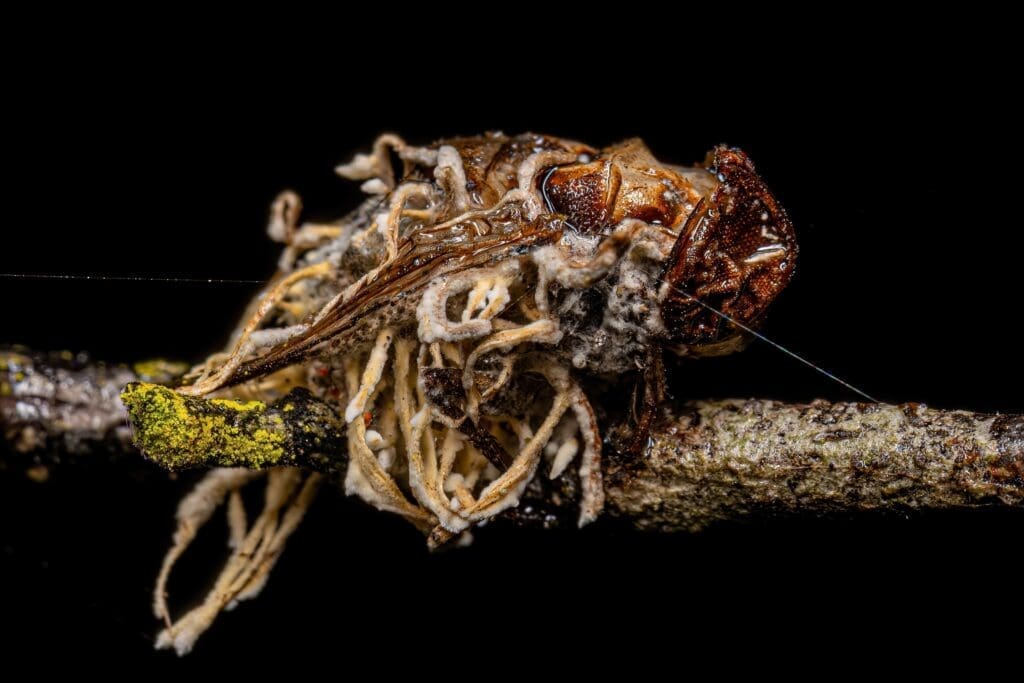
Photo from Getty Images / iStockphoto
This particular species of Zombie Ant Fungus drops its spores in the jungle on ants and takes sufficient control of them that they leave their nest and fellow ants to climb up off the jungle floor to a height of exactly 10 inches (25 cm) where the conditions are just right for the fungus to thrive and propagate.
The designated victim then attaches to the underside of a leaf with its mandibles while the fungus grows inside its host and sprouts a tiny mushroom-like growth. This fruiting body of fungus eventually distributes its spores to continue this cycle of propagation, infecting more ants in turn in a manner that is capable of infecting entire ant colonies.
Spread through Time and Space
This species shows some morphological variations due to its wide geographic range from Japan to the Americas. This may result from host-specific commitments to diverse species of ants in different areas, and helps avoid subspecies competition by occupying distinct ecological niches.
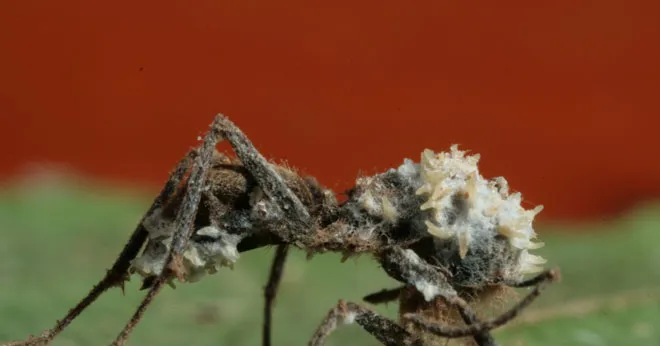
Ophiocordyceps also appears to be an ancient creature. In 2010, scientists identified a 48-million-year-old fossil of a Zombie Ant with a death grip on a leaf, verifying that zombifying fungi have been around for a while. But this fossil didn’t offer hints on how the fungus evolved.
Further work concluded that all Ophiocordyceps species descended from a common ancestor which started out by infecting the larvae of beetles that lived in rotting logs. When the beetle eggs hatched, the larvae crawled around alone inside the log, chewing on wood. When beetle larvae came into contact with a spore, the fungus would then invade the insect’s body to feed on its muscle, killing the beetle without any zombie drama. After that, the fungus would grow its stalk and spread spores around the dead body. Other larvae crawling inside the log were thus infected, prolonging this cycle of life and death.
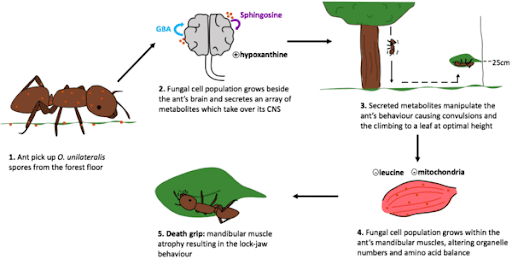
The theory is that millions of years ago, the fungi got picked up by ants that also lived in logs. In their new ant hosts, the fungus had already acquired an ability to feed on muscles, grow stalks and spread.
But these ants brought a new challenge, because, unlike solitary beetles, ants live in crowded nests. Diseases can wipe out an entire colony, so the ants ruthlessly attack any individuals that show signs of sickness. This meant that Ophiocordyceps could not spread the way it had in beetles, just by killing its host and sending out spores. However, by keeping ant hosts healthy enough as they were being parasitized, the invasive fungus could zombify the ant host to move it out of the main nest of ants and climb up a nearby plant, from which it could spread its spores to other potential hosts.
This is how the fungi’s transition to ants set off an evolutionary explosion. Once Ophiocordyceps had evolved to live in one species of ant, it began hopping to other new species. It is also suspected that there are hundreds of other species of Ophiocordyceps still to be discovered, perhaps with a wider range of potentially infectious impact…
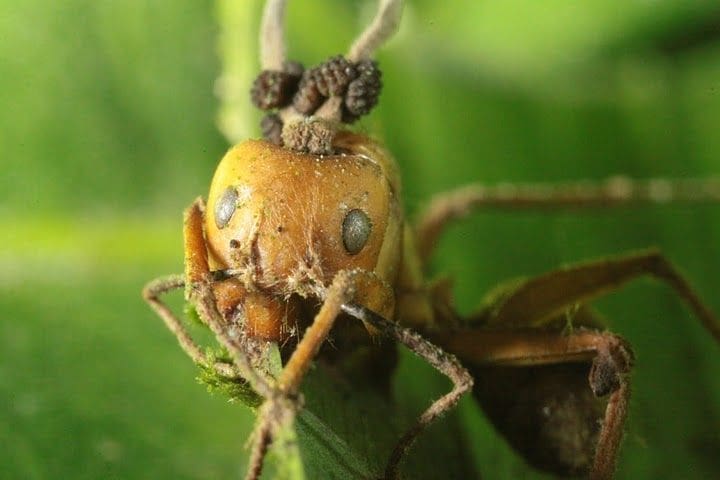
Growth by Infection
When the fungus infects a carpenter ant, it grows through the insect’s body, draining it of nutrients and hijacking its mind and behavior. Over the course of a week, it compels the ant to leave the safety of its nest and ascend a nearby plant stem. When this fungus invades the ant, taking over its muscles and mandibles, there is apparently no intervention into the ant’s brain itself.
The invasive fungus forces the ant to permanently lock its mandibles around a major vein on the underside of a leaf to attach itself. The ant then loses control of its mandible and remains fixed in place, hanging upside-down on the leaf. This lockjaw trait is popularly known as the “death grip” and is essential in the fungus’s lifecycle. This “death grip” prevents the ant from falling as it dies hanging upside down, thus enabling the proper growth of the fungus’ fruiting body. The “death grip” is thought to be caused by a secretion of fungal compounds that atrophies the ant’s mandibular muscles, making it impossible for the ant to unclench.
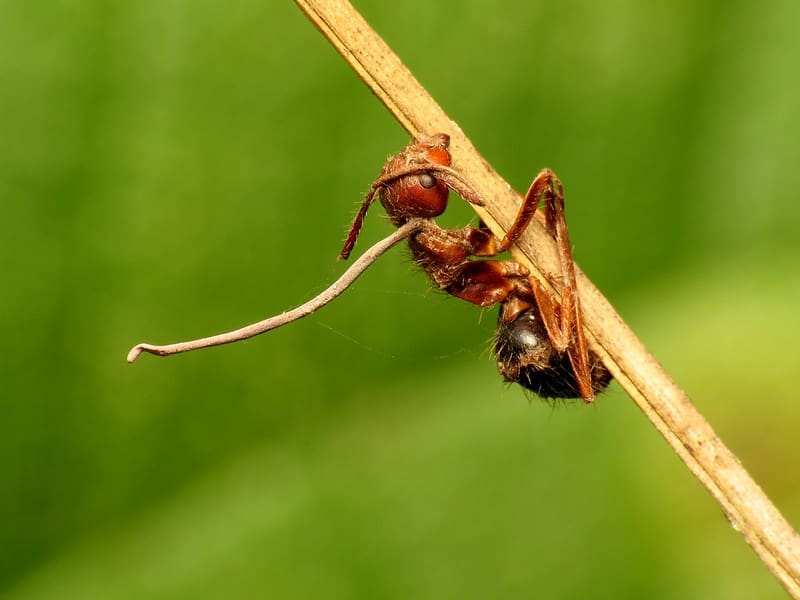
Once the ant is in place on the leaf’s underside, more fungal mycelia sprout, securely anchoring it to the plant substrate while secreting antimicrobials to ward off any other competitive fungi. Next, the fungus sends a lengthy growth through the ant’s head, growing into a bulbous capsule full of spores on a single, wiry yet pliant, darkly pigmented stalk rising through the back of the ant once it is dead.
This spore-bearing sexual structure appears as a bulge on the stalk, below its tip, which forms the fungus’ fruiting body. As the ant typically climbs onto a leaf that overhangs its colony’s foraging trails, its fungal spores will then rain down upon fellow ants below, ensuring that the cycle continues.
How to Create a Zombie: The View from the Inside
How this fungus takes over its host has been carefully analyzed. Once spores drop onto an ant, they attach to the ant’s exoskeleton and eventually break through it with mechanical pressure and the help of enzymes. Yeast stages of the fungus spread throughout the ant’s body and apparently produce compounds that affect the ant’s behavior such that it exhibits irregularly timed full-body convulsions that dislodge it from its canopy nest, dropping it to the forest floor. These infected behaviors work for the benefit of the fungus in terms of its own growth and transmission, increasing its fitness and survivability.
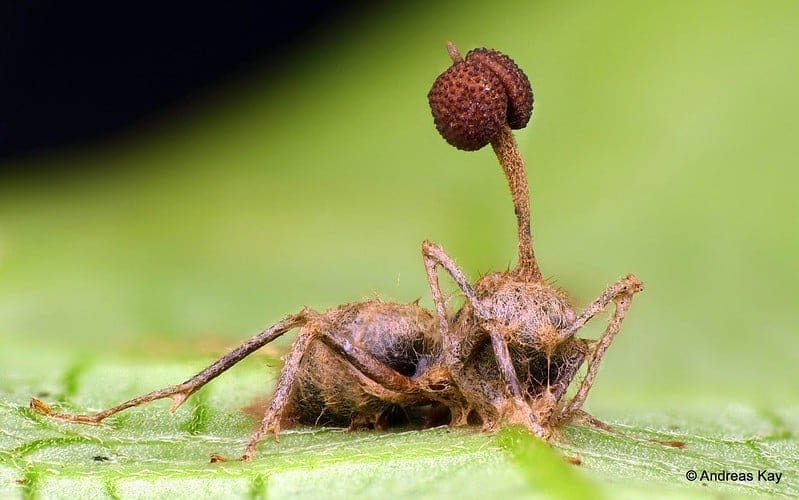
When the fungus first enters its host, it floats around the ant’s bloodstream as single cells, replicating copies of itself. Then, at some point, these single cells join together by building short tubes, which are only seen in fungi that infect plants. Hooked up together in this way, these cells in tubes successfully communicate and exchange nutrients with each other.
The next step is to invade the ant’s muscles, either by penetrating muscle cells or growing into interstitial spaces between these cells. The result is a muscle fiber encircled and drained by a network of interconnected fungal cells in a manner unique to this species, as shown in this brief simulation that represents the process quite clearly.
Zombies that don’t eat brains?
The Zombie Ant Fungus is often described as a single entity, which corrupts and subverts a host. But this fungus can also be seen as a colony, much like the ants it targets. Individual microscopic cells begin life alone but eventually come to cooperate, fusing into a superorganism.
Together, these brainless cells can take control of a much larger creature and manipulate its behavior. But perhaps surprisingly, they do that without ever physically entering or touching the brain itself, while infiltrating the ant’s body and muscles, including its head. Thus, this fungus can manipulate its host through a very precise sort of chemically-guided muscular control that does not affect the ant’s brain. This makes the intricacy of the fungal invasion even more compelling and disturbing, depending on how aware the ant is of this intrusive occupation.
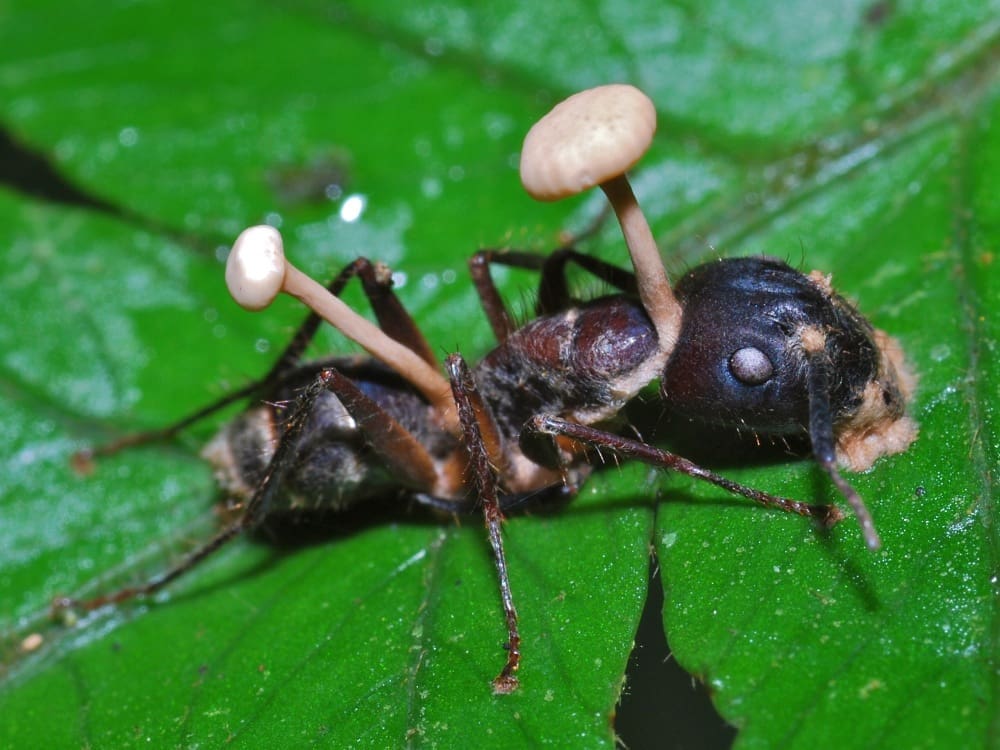
Maintaining the Life Cycle
It is worth noting that throughout its lifecycle, the fungus must meet unique challenges in its metabolic activities. First, the fungal pathogen must attach securely to the arthropod exoskeleton and penetrate it – while avoiding or suppressing its host’s defenses – and then control its host’s behavior before killing it. Finally, it must protect the ant’s carcass from microbial and scavenger attack so that it can reproduce successfully.
This invasion process, leading up to the host ant’s mortality, takes 4–10 days, and includes a reproductive stage where fruiting fungal bodies emanate from the ant’s head, eventually rupturing to release fungal spores. However, the short viability of the fungal spores presents a challenge. The fungus uses its host’s vitality to sustain the growth of the fungus’s fruiting body and enable successful reproduction. To do so, this fungus fortifies the ant cadaver to prevent its decay, which consequently ensures the prolonged growth of the fruiting body.
But this composite creature of zombie-ant fungus is, in turn and ironically, susceptible to fungal infection itself. This can limit its impact on ant populations, when it might otherwise devastate entire ant colonies. Ophiocordyceps unilateralis suffers from an unidentified fungal hyperparasite, reported in the press as the “antizombie-fungus fungus,” that results in only 6–7% of the primary parasite’s spores being viable, limiting the damage this fungus can inflict on ant colonies. This hyperparasite attacks Zombie Ant Fungus just as the fungal stalk emerges from the ant’s body, thus stopping the stalk from generating and releasing its spores.
This suppressive effect is caused by the weakening of the fungus by the hyperparasite, which may limit the viability of its infectious spores. There are additional species of fungi that can grant beneficial and protective assistance to the ant colony, as well. A complicated picture indeed!
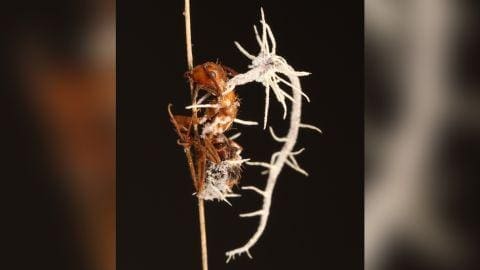
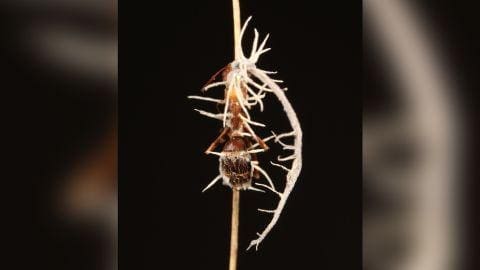
Dr. João Araújo of the New York Botanical Garden and his team discovered two new genera of fungus. (Photos by João Araújo)
For example, two novel lineages of fungi, each belonging to its own genus, were recently discovered infecting a species of Zombie Ant Fungus in Florida. One puts a fuzzy white coating on the Zombie Ant Fungus, while the other is harder to spot, with little black blobs that look like fleas. The fungi attacking the Zombie Ant Fungus don’t zombify their host, but they do feed on its tissues and appear to cause it harm by castrating the fungus so it cannot shoot its spores any longer. Then the attacker proceeds to grow and consume the entire fungus.
Though these new parasites are the first to be seen to infect the Zombie Ant Fungus, there could be others out there. Parasitism is a lucrative form of lifestyle, experts say; it might even be the most dominant one on the planet! (Maybe our politics illustrate that…)
Ants also can protect themselves by grooming each other to remove microscopic organisms that could potentially harm the colony. Consequently, in host–parasite dynamics, both the host and the parasite are under selective pressure: the fungal parasite evolves to increase its successful transmission for reproduction, while the ant host evolves to avoid or resist the infection by the parasite, in this case the Zombie Ant Fungus. And so an evolutionary battle continues…

(Photo by João Araújo)
The principal carpenter ant hosts of Ophiocordyceps unilateralis have also evolved adaptive behaviors to limit the contact rate between uninfected and thus susceptible hosts and already infected hosts, thereby reducing the risk of transmission to their healthy fellow ants by evolving efficient behavioral forms of social immunity. As mentioned, the ants clean the exoskeletons of one another to decrease the presence of spores which are attached to their cuticles.
These ants also notice the abnormal behavior that indicates when a member of the colony is infected, resulting in healthy ants carrying infected individuals far away from the colony to avoid fungal spore exposure. Furthermore, since most worker ants remain inside the nest boundaries, only foragers who venture outside are at any significant risk of infection.
In addition, the fungus’s principal host species, the carpenter ant (or Camponotus Leonardi) tries to avoid the forest floor as a defense method by building its nests high in the canopy, with a broad network of aerial trails. These trails occasionally must move down to the ground level, where infection and graveyards occur, due to wide canopy gaps difficult for the ants to cross while staying safely high in the forest canopy. When these trails do by necessity descend to the forest floor, their length on the ground is as short as possible, only 10-18 feet (3-5 m) or so before climbing back up into the canopy. This shows that these ants avoid zones of infection wherever they can. This method of defense appears to be adaptive to this specific threat, as it is not observed in undisturbed forests where the Zombie Ant Fungus is absent.
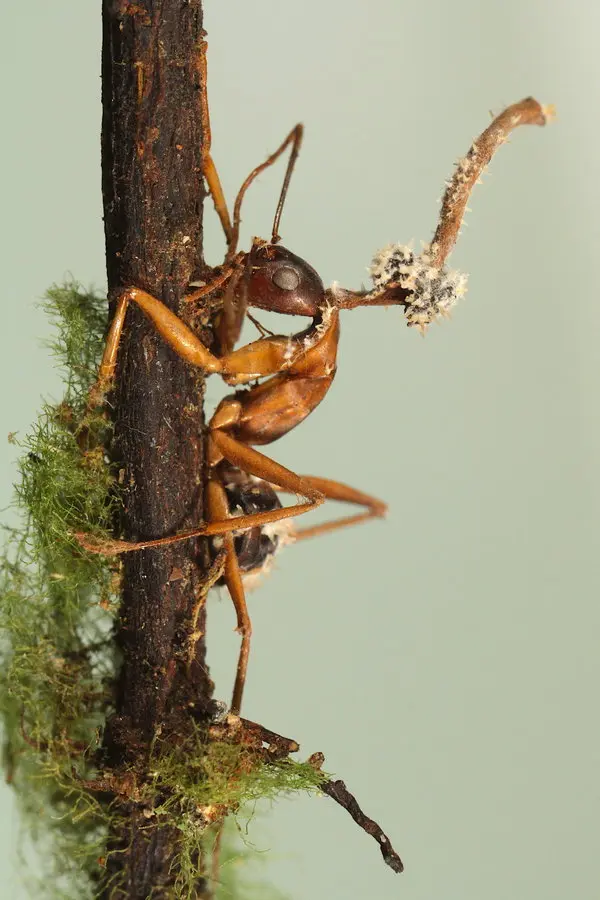
When Ophiocordyceps unilateralis-infected ants die, they are generally found in regions containing a high density of ants which were previously manipulated and killed, which are termed “graveyards” of 70-100 feet (20-30 m.) in range. The density of dead ants within these graveyards can vary with climatic conditions, where humidity and temperature influence this fungus’s effects on the host population. It seems that large precipitation events at the beginning and end of the rainy season stimulate fungal development, which leads to more spores being released and ultimately to more individual ant hosts being infected and killed.
The Wide World of Insect Parasites
What we have here is a hostile takeover of a uniquely malevolent kind. Enemy forces invade a host’s body and use that body like a walkie-talkie to communicate with its fellows to influence the brain from afar, while exercising a more direct control over the ant’s muscles like a puppeteer. Once an infection is underway, the neurons in the ant’s body that give it control of its muscles start to die, as this fungus slowly takes over, effectively cutting the host ant’s limbs off from its brain, as it inserts itself in that place, releasing chemicals that control the ant’s muscles. After the fungus enters the ant, it propagates its invasive cells until they surround the host’s brain, at which point the fungus secretes compounds and takes over the ant’s central nervous system, enabling it to manipulate the ant to reach the forest floor and climb up the vegetation.
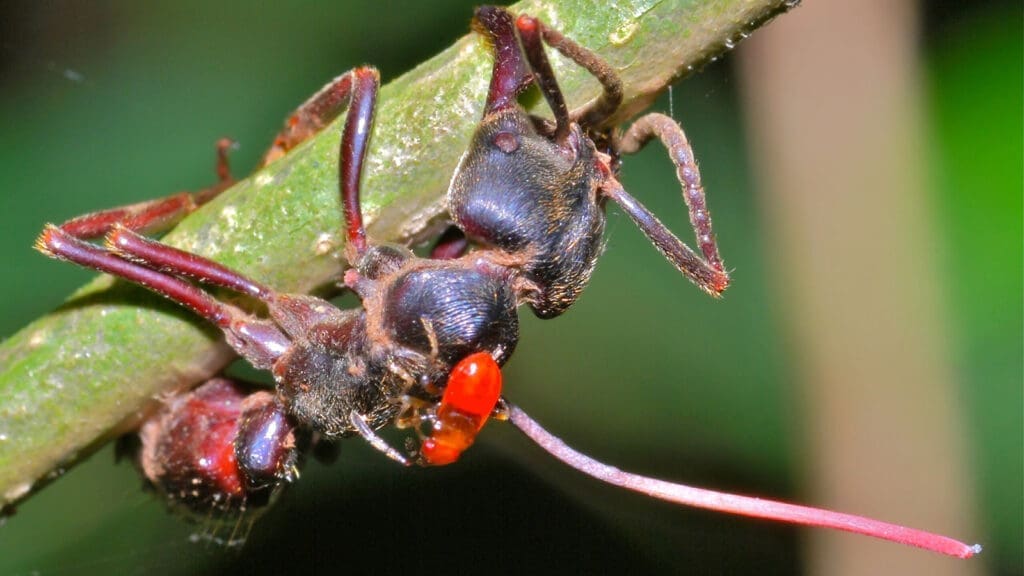
In this way, the ant ends its life as a prisoner in its own body, with its brain still in the driver’s seat while the fungus has seized control of the steering wheel in a cruel prolonging of the ant’s death in an agony of helpless surrender. The fungus survives and propagates successfully at the cost of these ants in this dark drama.
But not only ants can be infected with these creative parasites.
Much like the microbiome in our own guts, insects contain a whole array of fungal species, of which few have been closely studied, much less flagged for causing behavioral manipulations. Some are known, however.
One example is Entomophthora muscae, which literally means “insect destroyer of the fly” in Greek. It causes infected flies to climb a certain height, glue themselves at the mouth to a plant, and assume an abdomen-up “death pose” that’s optimal for spore dispersal. (Watch the flies turn into zombies here.)
And there’s Massospora cicadina, which pumps its cicada hosts full of hallucinogenic drugs and causes part of their abdomens to fall off. The bare-bottomed cicada then wiggles its way towards death – once again in the interest of spore dispersal.
Could this happen to us? Personally, this whole scenario gives me the willies, leaving me surprisingly sympathetic to these victimized ants and other infected insects, while also being enthralled by a sense of wonder about the endless variety of nature’s solutions to the reproductive urge of species to propagate themselves. Perhaps we humans should become more alert to all these striking opportunities for Mother Nature to assert her ultimate dominance over us. Some scientists believe that, by studying this Zombie Ant Fungus, we can learn a lot more about how the brain works – and how it might be taken over, which is surely some food for dystopian thought.
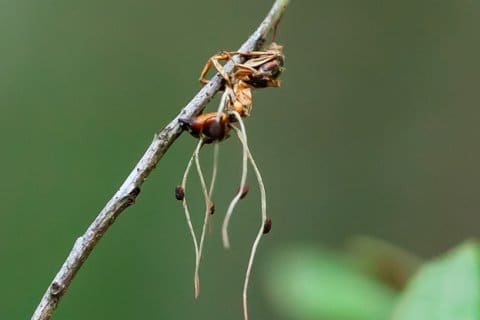
Medicinal Properties
Ophiocordyceps are known in the pharmaceutical world to be a medically important group. These Zombie Ant Fungi (Ophiocordyceps unilateralis) and related species are known to engage in an active secondary metabolism to produce antibacterial substances that protect the fungus-host ecosystem against further pathogens during fungal reproduction.
Because of this secondary metabolism, chemists who study natural products have taken an interest in this species, discovering small molecule agents of potential interest for use as human anti-infective and anticancer agents. These natural products are reportedly being investigated as potential leads in discovery efforts toward the treatment of immune diseases, cancerous tumors, diabetes and high cholesterol levels.
Another species of fungus, Ophiocordyceps sinensis, already mentioned above as a parasitic fungus-caterpillar husk combination, is prized in traditional Tibetan and Chinese medicine as an immune booster, cancer treatment, and aphrodisiac.
Moreover, red naphthoquinone pigments produced by Ophiocordyceps unilateralis are used as a dye for food, cosmetic, and pharmaceutical manufacturing processes. Curiously, naphthoquinone derivatives produced by the fungus also show a red color under acidic conditions, and a purple color under basic conditions. These pigments are stable under a wide variety of conditions as well as not being toxic, which makes them applicable both for food coloring and as a dye.
These attributes also make it a prime candidate for antituberculosis testing in TB patients, by alleviating symptoms and enhancing immunity joined with other chemotherapy drugs. So even this seemingly-nasty creature has some benefits for us humans, once we are able to look beyond its fearsome characteristics.
But this is so generally true of the wondrous variety of nature’s creatures such as featured in this series. We look at them through our human eyes, asking what they can do for us, when the whole natural world is swimming along quite well without our help or needing us for anything. The whole system should have our respect, just for including us in its amazing complexity of life forms and how it all works.
So here’s to a totally infectious and all-consuming curiosity!
Fred
Sources:
https://www.pnas.org/doi/full/10.1073/pnas.1711673114
https://hasanjasim.online/how-the-zombie-fungus-infects-ant-bodies-and-takes-control-of-their-minds/
https://en.wikipedia.org/wiki/Ophiocordyceps_unilateralis
https://www.nationalgeographic.com/animals/article/cordyceps-zombie-fungus-takes-over-ants
https://www.cnn.com/2022/11/18/world/zombie-ant-fungus-parasite-mystery-scn/index
https://www.npr.org/2023/01/30/1151868673/the-last-of-us-cordyceps-zombie-fungus-real
https://www.vox.com/culture/2023/1/21/23561106/last-of-us-fungus-cordyceps-zombie-infect-humans
https://www.nytimes.com/2019/10/24/science/ant-zombies-fungus.html
https://www.nature.com/articles/s41598-020-63400-1
https://www.nationalgeographic.com/science/article/parasitic-fungus-evolve-to-control-humans

